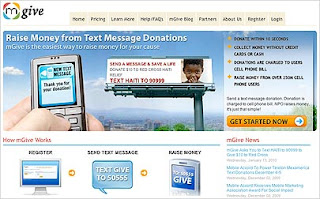Tuesday, May 11, 2010
We've moved
We finally moved our blog to our new shiny website. Please visit us there: http://www.marketingmomentumassociates.com/blogGroups/brenda-gelston-blog
Looking forward to your comments, ideas and feedback on everything B2B Demand Generation related.
Brenda
Thursday, February 25, 2010
My $24.95 lesson in marketing in an age of empowered customer.
Right? Well, wrong!
I buy it and when I go to download, it does not. So I contact their shiny online customer service agent. He comes online within seconds…I am happy as a clam. I need to get this resolved and get back to work asap. Rep tells me that I need to pay another $25.95 service fee to help with the download. Seriously? You are asking me to pay more to help me access something I already paid for? Click! I am out and on twitter ranting and raving about Ad-Aware.
Then it occurred to me, I am the empowered customer now. I have a voice.
Lessons #1:
We are living in an age of empowered customer. Same customer you just ticked off might just have 6000 twitter followers. She might be advising a $100MM company and be in charge of a multimillion dollar IT budget. More important than any of this…she now has a voice that can potentially reach thousands of YOUR customers.
Lesson #2:
One of my favorite bloggers Valeria Maltoni at Conversation Agent had a recent post that highlighted the need of customer-centeredness in budgeting for marketing as well as communication strategy and customer service. She stated “Marketing budgets need to be set on customers’ ability to pay, not marketing spend.”
The point of setting marketing budgets based on customers’ ability to pay is especially poignant for B2B service providers. When I speak to clients about marketing budgets, we often shift our thinking from setting benchmarks based on what we spend last year or what the competition spends. Instead we focus on determining measurable and predictable results based on the customers’ engagement with the service offering. For example engaging customers on social media is not necessarily a budget intensive activity but rather it is time intensive and has to be strategically administered.
In this age of customer empowerment, lines are not only blurred but completely emerged between customer service and profitability. Marketers can no longer hide in their cubicles and burry themselves in excel charts within the safety of quarterly budget meetings. Social media is the acid test for all things marketing and it is immediate. Throwing money at bad business practices is no longer effective. We have to get back to the basics and scrutinize our business models. As marketers we have to be courageous and question managements' view on marketing ROI.
After all ROI really comes from customer not from marketing activities.
Thursday, February 04, 2010
Managing the Sales Prevention Department
How true! There is such a ghostly abyss as the Sales Prevention Department. We send our customers there without even knowing unless they have the enough mojo to raise their voices and tell us what went wrong. They simply disappear into “thanks, but no thanks” land.
So what can we do to abolish this Sales Prevention Department? One simple and clear strategy is to ensure sales and marketing work in alignment. Easier said than done, right? But here is a perspective that can help us all understand each other. Sales is a transactional function so they are looking at everything in terms of numbers and quantifiable items. Marketing on the other hand is a world of perceptions, compelling messages and persuasion. I look at it as gas and motor. You can have the most sophisticated motor (sales) but without gas (marketing) it will just sit there.
As my friend Margaret pointed out mapping out the purchasing journey is not enough. We should be focused on the entire engagement process. This way each inquiry, each conversation, each download, every web visit or blog comment has a value. Perhaps not in terms of dollars and cents but in terms of business results. After all we are not working to achieve only this quarter’s sales objectives but rather for the achievement of overall business results.
Friday, January 15, 2010

Everything I have to say about demand generation fades to the background in comparison to the suffering people are currently experiencing in Haiti.
So this is my only blog entry this week:
"Text HAITI to 90999 to donate $10 to @RedCross relief."
Note: Image borrowed from MoBlog
Friday, January 08, 2010
Who is afraid of negative blog comments?
But here is another perspective to consider. Contemporary marketing strategies such as demand generation and customer engagement practices have relationship building at their core. And relationships are built around interactions. So in that sense every interaction is an opportunity to build a relationship. We have to change our thinking and start looking at negative comments as opportunities and welcome them to reside on our website, blog or fan page instead of circulating out there in cyberspace without even our knowledge.
With blogs, Facebook groups, LinkedIn discussions, YouTube, Twitter, SlideShare and many other social media outlets companies have to embrace the fact that there will be instances where the content we put out there might rub someone, somewhere the wrong way. Social media platforms give us an opportunity humanize our brand and clearly demonstrate how committed we are to solving our customers’ problems.
As we gear up for demand generation efforts it is important to get comfortable with possibility of negative comments or reactions to the content. Instead have a clear roadmap as to how the company will respond, who will be in charge of tracking and answering, what incentive to offer as a follow up and how to measure. Having a strategy is the solution, instead of last minute scrambling to respond or hiding in case we get negative feedback.
Monday, January 04, 2010
Predictions or wishful thinking...take your pick!
I was totally wrong last year in my prediction that mobile is finally going to make a much needed entrance to the B2B space in the US. I wonder if 2010 will be the year businesses see the potential in using mobile technology. B2B sales and lead nurturing relies heavily on relationship building so to me it makes perfect sense to include mobile as a customer retention tool especially considering advances in GSM technology. For instance, a customer might find it perfectly acceptable to share her cell phone number with a firm if she is getting location based additional perks such as opportunity to network with other executives while attending a tradeshow or access premium services through smart phone applications. Cell phone is an intimate medium and I see it as an opportunity for relationship building. We just have to orient our thinking in terms of added value to the customer rather than another outlet to “sell, sell, sell”.
The biggest dot in everyone’s radar this year is social media. Basically the sky is the limit in terms of how B2B lead generation can use social media. Blog after blog I read is stating that social media is all about conversation and great content. The major hurdle I see is to convince people who hold the purse strings to resist temptation to jump the gun and start pushing sales messages down people’s throats instead of using social outlets to listen to what people are talking about and figure out how to bring in value to the conversation related to their business.
I think the shiniest toy this year is going to be video. Video on corporate home pages, video in transit media, video in mobile, video in lead gen and video in CRM……I used to be a practitioner of multimedia when way back when we had a hard time even explaining to our parents what it is that we did at work. I am now glad to see digital technology has caught up with possibilities video represents.
I see video, email and search doing the heavy lifting in demand generation this year…..well, see I could not resist and slipped in my own prediction. I hope I am right! It will be an adventurous year for marketers.
Friday, December 11, 2009
Kick-start 2010 with demand generation best practices
As this year is winding down to an end, the industry experts have started to post their year-end reviews and predictions one by one. There is a ton of great advice out there and companies are listening to these demand generation experts. Businesses large and small have become more open to strategizing and implementing nurturing and engagement programs.
This year companies have become more open to aligning their functional structures and capabilities to support demand generation programs. They devote more resources to lead generation and retention marketing strategies. This is good news for us demand generation practitioners. This means the ground work is underway and executive buy-in is easier to achieve.
According to Aberdeen Group, there are four common traits in firms that successfully deploy demand generation and nurturing programs:
1. They implement initiatives to monitor and improve lead to sales conversion
2. They instill an organizational focus on lead generation and measurement
3. They adopt technologies to automate lead generation and lead management
4. They segment and target specific geographies and demographics
An effective demand generation and lead nurturing program tracks everything from number of inquiries generated, website traffic, lead to conversion ratio, page view duration, lead to close ratios and lead to close time frame. All of these indicators are measurable therefore subject to improvement.
The direct effect of the proliferation of demand generation and nurturing practices is that sales and marketing functions move closer and closer to each other. Sales and marketing will never overlap but I look forward to the day turf wars become a non-issue. That day is closer than ever in my view.

